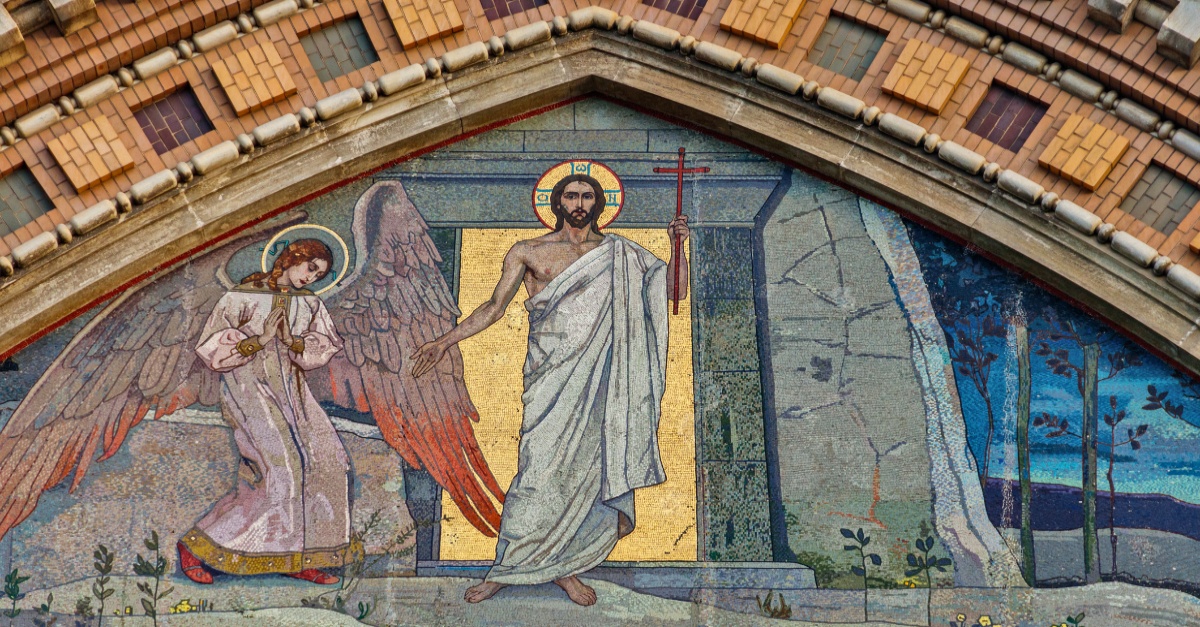Do Any Pictures of Jesus Exist?

It’s natural to wonder what Jesus looks like when we’re in relationships with him. We can feel his love and perceive his wisdom, but for now, we can’t see Jesus physically. Of course, there are no photographs of Jesus, because photography hadn’t been invented yet when he came to Earth. But what about other pictures of Jesus? Are there any accurate paintings or other types of reliable pictures of Jesus that exist?
Does the Bible Ever Indicate What Jesus Looks Like?
The Bible doesn’t say much about what Jesus looks like, but it does include some clues.
Isaiah 53:2-6 mentions Jesus’ appearance, as well as the connections between what he looks like and the work he did for humanity by taking our pain onto himself and redeeming it: “He grew up before him like a tender shoot, and like a root out of dry ground. He had no beauty or majesty to attract us to him, nothing in his appearance that we should desire him. He was despised and rejected by mankind, a man of suffering, and familiar with pain. Like one from whom people hide their faces he was despised, and we held him in low esteem. Surely he took up our pain and bore our suffering, yet we considered him punished by God, stricken by him, and afflicted. But he was pierced for our transgressions, he was crushed for our iniquities; the punishment that brought us peace was on him, and by his wounds, we are healed. We all, like sheep, have gone astray, each of us has turned to our own way; and the LORD has laid on him the iniquity of us all.” From this passage, it’s clear that Jesus wasn’t especially handsome during his earthly life, and it seems like that was on purpose. Jesus wants people to focus on him spiritually rather than physically. People can get distracted from what matters most (someone’s soul) when they’re dazzled by someone’s physical attractiveness. Jesus chose to appear on Earth as an ordinary human being that didn’t attract any special attention just because of how he looked.
In 1 Samuel 16:7, God says to Samuel, “…The LORD does not look at the things people look at. People look at the outward appearance, but the LORD looks at the heart.” God encourages us to look at what is truly important – the heart (the soul), which is also the part of us that lives forever. Too often, we can get so preoccupied by people’s outward appearances that we don’t pay enough attention to what they’re like on the inside.
We also know from the Bible that Jesus had Jewish ancestry. Many current depictions of Jesus show him as a white person, but that’s not what they Bible says about Jesus’ heritage. So, Jesus likely had dark hair (either brown or black) and skin with an olive tone, which are typical physical characteristics for people of Jewish ethnicity.
Finally, the Bible describes how Jesus’ appearance with heavenly glory differs from his earthly human appearance. During the Transfiguration, Jesus revealed his heavenly appearance to several of his disciples. Matthew 17:1-2 records: “After six days Jesus took with him Peter, James and John the brother of James, and led them up a high mountain by themselves. There he was transfigured before them. His face shone like the sun, and his clothes became as white as the light.” In Revelation chapter 1, the apostle John describes his vision of Jesus in heavenly glory. Revelation 1:12-16 gives details about how Jesus looked to John, “I turned around to see the voice that was speaking to me. And when I turned I saw seven golden lampstands, and among the lampstands was someone like a son of man, dressed in a robe reaching down to his feet and with a golden sash around his chest. The hair on his head was white like wool, as white as snow, and his eyes were like blazing fire. His feet were like bronze glowing in a furnace, and his voice was like the sound of rushing waters. In his right hand he held seven stars, and coming out of his mouth was a sharp, double-edged sword. His face was like the sun shining in all its brilliance.”

Photo Credit: ©GettyImages/OlyaSolodenko
Do Any Pictures of Jesus Exist?
Many pictures of Jesus exist in the form of artistic depictions of him over the centuries. However, we can’t be sure if any of them are accurate portrayals of what Jesus actually looked like in human form. No one painted Jesus during his earthly lifetime, as far as we know. That’s typical for the time and place that Jesus lived in, where only wealthy people usually got portraits made of them. The earliest artworks portraying Jesus that have historians have discovered so far date to the 3rd century (about two centuries after Jesus’ death and Resurrection). Those are the paintings of Jesus in the catacombs of the St. Domitilla church in Rome (which portray Jesus and his disciples with short brown hair and no beards, in the Roman style). The earliest depiction of Jesus found so far in Israel is a 6th-century portrait from a ruined church, which shows Jesus with short, curly hair. After the 6th century, portraits of Jesus with long hair became more common. Some of the most famous pictures of Jesus – such as Leonardo da Vinci’s “Last Supper” painting from 1498 and Warner Sallman’s “Head of Christ” painting from 1940 – show Jesus as a long-haired white man. A modern painting of Jesus called “Prince of Peace” – painted by Akiane Kramarik in 2003 when she was eight years old, based on visions she says she had of Jesus – depicts Jesus with short, curly brown hair, a beard, olive skin, and blue eyes. Some people who say they met Jesus during near-death experiences point to “Prince of Peace” as an accurate portrayal of Jesus in human form.
One artifact that some people believe represents what Jesus really looked like in human form is the Shroud of Turin. The shroud, which is controversial, is said to be the burial shroud of Jesus’ body. A theory exists that energy from Jesus’ Resurrection imprinted his image on the shroud. Photograph negatives of the shroud reveal an image of a tall man with medium-length curly hair and a beard.
“Pictures” of Jesus We Can Hold Fast To
While we don’t have any physical pictures of Jesus that we know for sure are accurate, we do have spiritual “pictures” of Jesus from the Bible that are quite clear.
Jesus is united with the Holy Spirit as part of the Trinity (God the Father, Jesus the Son, and the Holy Spirit). So, we can see pictures of Jesus’ character in the character of the Holy Spirit, which is called the “fruit of the Spirit” in Galatians 5:22-23: “But the fruit of the Spirit is love, joy, peace, patience, kindness, goodness, faithfulness, gentleness, self-control; against such things there is no law.” In my book Wake Up to Wonder, I explain how we can follow Jesus’s example as our role model to develop those character qualities – and in the process, how we can notice the wonder of God’s work in our lives.
Another way we can see spiritual pictures of Jesus is to look at how he puts his power into action in our world. While Jesus has unlimited power (Colossians 1:17), he uses that power for good purposes (Romans 8:28). Jesus gives us peace like no one else can. He promises in John 14:27: “Peace I leave with you; my peace I give you. I do not give to you as the world gives. Do not let your hearts be troubled and do not be afraid.” When we look at Jesus spiritually, we see the ultimate example of love in action. Jesus is love at his core, because “God is love” (1 John 4:8). Jesus is always challenging us to grow spiritually, and that’s possible because empowers us to do so as we trust him. Jesus meets us wherever we are and walks with us in a close relationship. He presents a compelling image of that dynamic when he says in Matthew 11:28-30: “Come to me, all you who are weary and burdened, and I will give you rest. Take my yoke upon you and learn from me, for I am gentle and humble in heart, and you will find rest for your souls. For my yoke is easy and my burden is light.”
Conclusion
We don’t have any physical pictures of Jesus that we know for sure are accurate, but we do have reliable spiritual pictures of Jesus to learn from and enjoy. Jesus wants us to focus our attention on following him as a spiritual role model. Then, when we get to heaven, we’ll be able to celebrate with him face to face. As 1 Corinthians 13:12 says, “For now we see in a mirror dimly, but then face to face. Now I know in part; then I shall know fully, even as I have been fully known.”
Photo Credit: ©GettyImages/Nikolaev

Originally published December 12, 2022.







